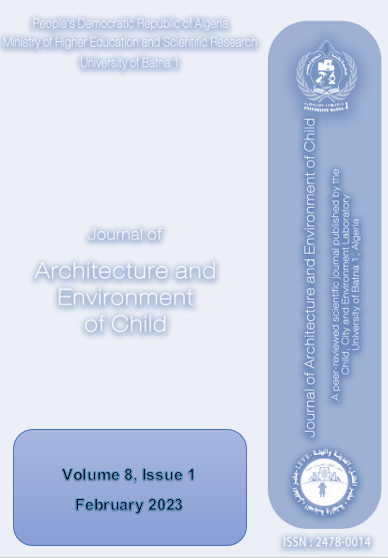Study Of The Thermal Comfort Of Autistic Children In Schools Buildings
Case Study At The City Of Bejaia
Keywords:
Thermal confort, Children, Autism, Schools buildings, BejaiaAbstract
The majority of school structures and facilities for people with reduced mobility in Algeria are marked by their lack of comfort, in particular thermal comfort, this finding is the result of poor architectural quality observed mainly in the use of certain construction materials. construction, and of the architectural devices used, which negatively influences the thermal functioning of these structures, and thus deteriorates the psychological state of its users. To face this situation, and to contribute to the improvement of the conditions of schooling of children with specific needs, the present work aims to determine the impact of the most used materials in Bejaia and the architectural devices on the thermal aspect. The article is based on the study of two schools located in the city of Bejaia. The research methodology is based on an empirical approach, first, using a questionnaire survey and through measures in situ measurements of ambient (indoor and outdoor temperatures), in order to evaluate and estimate the degree of the well-being of persons with disabilities in relation to the thermal and architectural quality of schools, and the influence of these factors on their psychological comfort. A numerical study by the dynamic thermal simulation software "ArchiWIZARD-EnergyPlus" was carried out in order to study and optimize the influence of the most used materials in Algeria and architectural devices on the thermal and energy performances as well as on the psychological comfort of people with reduced mobility in schools. The results of the research confirmed that thermal discomfort and poor architectural quality are detrimental to the psychological comfort of people (a direct relationship between physical and psychological comfort) with reduced mobility when these are not taken into account during the design. The choice of materials and architectural devices affects the level of energy efficiency as well as the thermal and psychological comfort of people with reduced mobility in school buildings.

